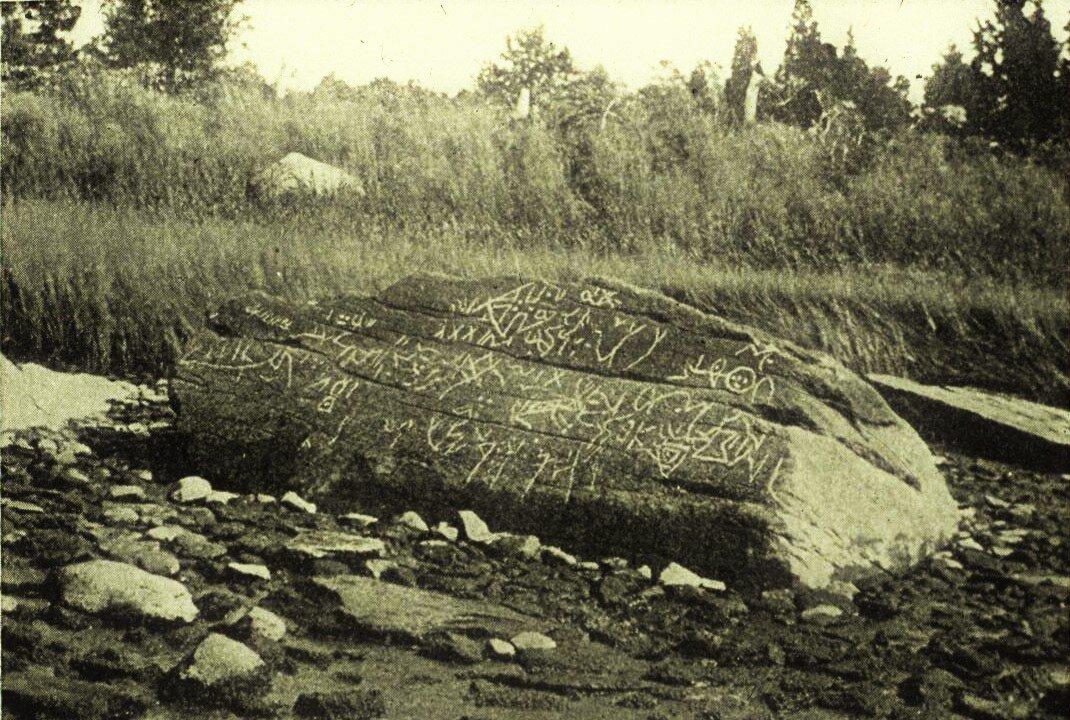Are the symbols on the Dighton Rock Native American? Norse? Phoenician? Chinese? Portuguese? Japanese? All or none of the above? There have been numerous theories about who carved the inscriptions found on the 40-ton boulder in Massachusetts. But no one has been able to say with certainty who first wrote on the rock, what they wanted to communicate, or why.
Description of Dighton Rock
The Dighton Rock is a 40-ton boulder that arrived to the Taunton River when glaciers melted during the last ice age. It measures 5 feet (1.5 meters) high, 9.5 feet (2.9 meters) wide, and 11 feet (3.4 meters) long, and is made of gray-brown crystalline sandstone.
What has drawn attention to the great boulder is not its size, but the petroglyphs across one of its six sides. These carvings have been the inspiration for over 1,000 books and articles, and more than 35 hypotheses. Although no one can say for certain who made the inscriptions, it is certain that they are very old.
Early History of Dighton Rock

